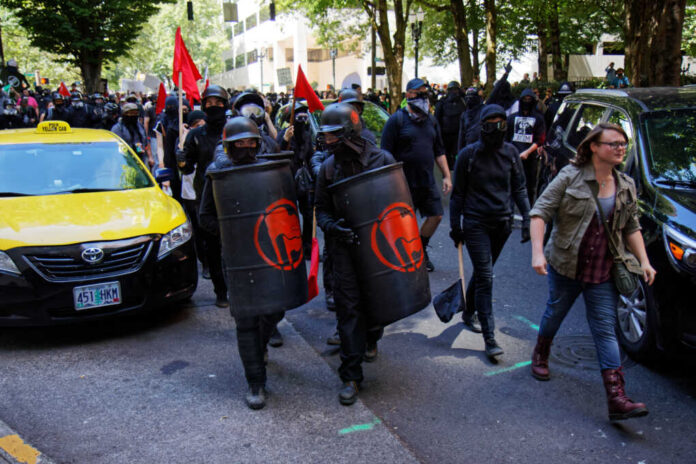Antifa’s Secretive Rise — Are You Safe?

A resurgence of left-wing political violence sparks debates on its impact on American society and constitutional rights.
Story Highlights
- Left-wing political violence is evolving from organized terror to decentralized activism.
- Recent years have seen a rise in militant activism in response to right-wing populism.
- Groups like Antifa are at the forefront of this movement in the US and Europe.
- The debate over the legitimacy of political violence continues within leftist circles.
Evolution of Left-Wing Political Violence
Left-wing political violence has its roots in 19th-century anarchist and socialist movements, but its methods and motivations have evolved significantly over time. During the Cold War, groups like the Red Army Faction and Shining Path engaged in organized terror campaigns, often supported by Soviet and Cuban interests. However, the decline of the Soviet bloc in the 1990s led to a decrease in such activities. Today, instead of structured terrorism, left-wing violence is characterized by decentralized activism, often led by groups like Antifa, responding to perceived threats from right-wing populism.
Modern left-wing activism is less lethal and more sporadic compared to historical terrorism. Instead of targeting the general public, contemporary groups focus on property and confrontations with far-right entities. This shift in tactics is largely in response to political developments and the perceived rise of authoritarianism, especially after events like the Charlottesville rally in 2017. The resurgence of militant activism has sparked significant debate over the effectiveness and morality of political violence within leftist movements.
Impact and Current Developments
Since 2016, there has been a noticeable increase in left-wing activism, particularly in reaction to right-wing rallies and political developments in the US and Europe. This resurgence is often justified by left-wing groups as necessary to combat fascism and protect vulnerable communities. However, mainstream leftist organizations and political leaders frequently emphasize peaceful protest and distance themselves from violent tactics, highlighting a divide within the movement.
Despite the heightened activity, left-wing political violence remains rare compared to historical levels and is generally less lethal than other forms of extremism, such as right-wing or Islamist terrorism. Law enforcement and intelligence agencies continue to monitor these groups, although most of their activities are categorized as nonviolent protests.
Long-Term Implications
The ongoing debate about the legitimacy of political violence poses both short-term and long-term challenges. In the short term, there is increased polarization and escalation of street-level confrontations. In the long term, the potential for further radicalization exists, although this is countered by discussions within leftist movements about the efficacy and morality of such tactics. The broader impact extends to economic, social, and political spheres, affecting everything from local economic conditions to national policy debates on extremism and civil liberties.
As the landscape of political violence continues to evolve, it is crucial for both policymakers and the public to engage in informed discussions about the root causes and potential solutions. Promoting dialogue and understanding across ideological lines can help mitigate the risks associated with such violence and ensure that constitutional values are upheld.
Sources:
Wikipedia: Left-wing terrorism
EBSCO: Far Left and Political Violence: Overview


